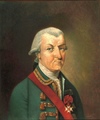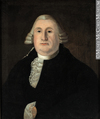on Lake Champlain. Loring had taken so long to prepare vessels, however, that Amherst decided it was too late in the season to pursue his advantage against the now exposed fort on he aux Noix in the
immediately and took up residence in Quebec with his wife, Angélique Juste, and their children in a house on Rue Champlain, near the future shipyard.
That
of the Seven Years’ War he served with Lévis at Lake Champlain. He had rheumatism in the summer of 1756, and
sick and wounded in the Lake Champlain region, probably built up a practice quite quickly. In September 1766, after Feltz left for France, he became surgeon-in-chief at the Hôpital Général and served
Louis*, known as the Chevalier de La Corne, were destined to participate in military and commercial endeavours which took them to the same battlefields south of Lake Champlain and the same fur
preface to his Champlain Society edition of the Historical journal (3v., Toronto, 1914–16; repr. New York, 1968). Some additional information has been gleaned from Knox’s will in PRO, Prob. 11/1040
Île aux Noix from April to August 1760, he escaped to Montreal when the French were forced to abandon the Champlain-Richelieu front. After the capitulation of the city, he returned to Quebec and sailed
.
In November 1798 James Johnston made his will, and on 8 April 1800 he died at Quebec in his house on Rue Champlain. With his death the firm of Johnston and Purss was dissolved and its
Carillon (Ticonderoga, N.Y.). Upon reaching Lake Champlain he suggested to the officer commanding the sector, Bourlamaque*, that
Lanoullier de Boisclerc, constructed two great roads, from Quebec to Montreal and from Montreal to Lake Champlain, which facilitated settlement and the movement of goods within the central colony. Hocquart, in
to leave for the colonies.” Although the citizens of Montreal protested, the unfortunate magistrate got off with taking the road to Lake Champlain and being “kept a prisoner for 18 months
L’Orme was parish priest at Champlain, from which he was absent only for a voyage to France, from October 1711 to November 1712. Few traces of this first ministry remain
expedition up lakes George (Lac Saint-Sacrement) and Champlain. Because of the qualities of leadership Haviland had demonstrated at Fort Edward and during the 1759 campaign, he was selected by Amherst to lead
in the area along Lake Champlain and northwards to Yamachiche. In mid September Gugy wrote to Haldimand, now governor of Canada, of his intention to establish these people, who were mainly women and
Lake Champlain and in 1753 became the holder of Mistanguienne, an arriere-fief belonging to the seigneury of Notre-Dame-des-Anges, which he sold four years later to storekeeper François-Joseph de
DUQUESNE (Du Quesne, Duqaine, Duquêne) DE MENNEVILLE, ANGE, Marquis DUQUESNE – Volume IV (1771-1800)
direction of Acadia and New York. In so doing he was complying with the instructions he had received to do nothing in Acadia and around Lake Champlain. Moreover, he knew that his successor would arrive with
.
Vergor continued his service, at Lake Champlain, in 1757 and 1758. In 1759 he was back at Quebec, besieged from June by James Wolfe* and Charles
.
Following his return to Canada in 1756, Druillon served mainly in the Lake Champlain sector. As a full ensign, he participated in
his subordinates created a fleet of small ships on Lake Champlain which defeated Arnold’s flotilla in the battle of Valcour Island (11–13 October). This feat required no embroidery, and it bespoke
restored. Finally, tired of it all, Desdevens de Glandons returned to Canada, probably that year; his surveying reports indicate he was working at Lake Champlain in 1786 and at Nicolet the following year






